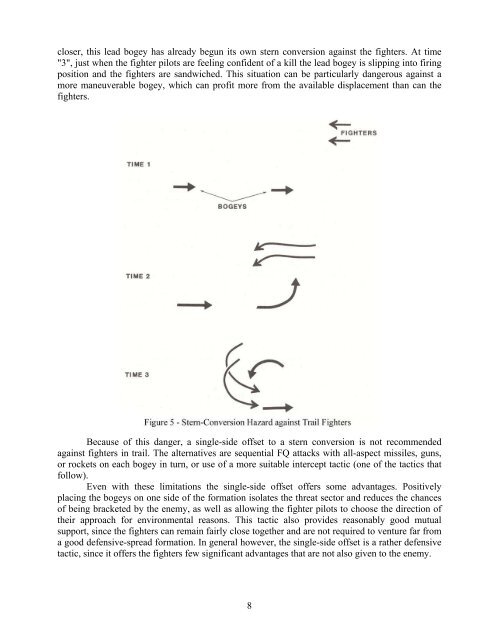Tactical Intercepts.pdf - e-HAF
Tactical Intercepts.pdf - e-HAF
Tactical Intercepts.pdf - e-HAF
Create successful ePaper yourself
Turn your PDF publications into a flip-book with our unique Google optimized e-Paper software.
closer, this lead bogey has already begun its own stern conversion against the fighters. At time<br />
"3", just when the fighter pilots are feeling confident of a kill the lead bogey is slipping into firing<br />
position and the fighters are sandwiched. This situation can be particularly dangerous against a<br />
more maneuverable bogey, which can profit more from the available displacement than can the<br />
fighters.<br />
Because of this danger, a single-side offset to a stern conversion is not recommended<br />
against fighters in trail. The alternatives are sequential FQ attacks with all-aspect missiles, guns,<br />
or rockets on each bogey in turn, or use of a more suitable intercept tactic (one of the tactics that<br />
follow).<br />
Even with these limitations the single-side offset offers some advantages. Positively<br />
placing the bogeys on one side of the formation isolates the threat sector and reduces the chances<br />
of being bracketed by the enemy, as well as allowing the fighter pilots to choose the direction of<br />
their approach for environmental reasons. This tactic also provides reasonably good mutual<br />
support, since the fighters can remain fairly close together and are not required to venture far from<br />
a good defensive-spread formation. In general however, the single-side offset is a rather defensive<br />
tactic, since it offers the fighters few significant advantages that are not also given to the enemy.<br />
8
















